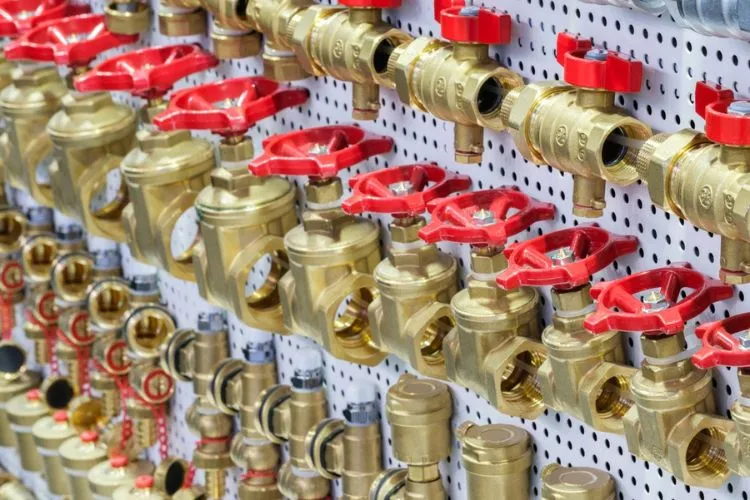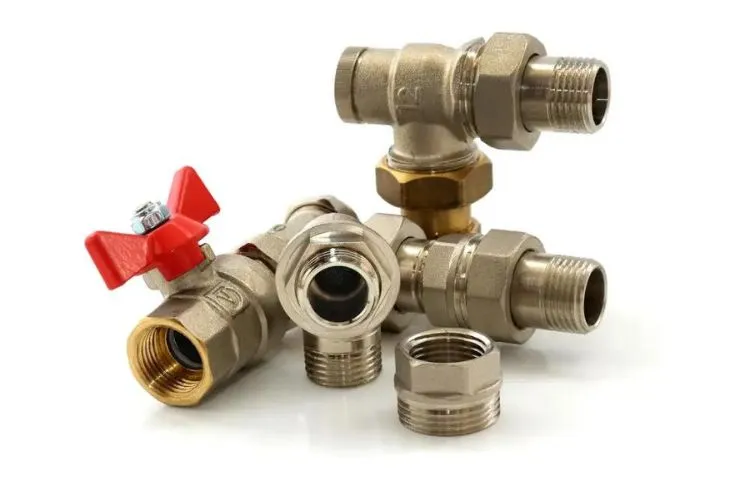Brass, an alloy of copper and zinc, is a ubiquitous material in plumbing and home fixtures due to its strength and resistance to corrosion.
Despite these advantages, concerns about its lead content have spawned debates about its safety in drinking water systems.
So, is brass safe for drinking water?
This comprehensive analysis explores the historical context, health implications, regulatory landscape, and technological advancements to provide a well-rounded view of brass’s suitability for use with drinking water.

Is Brass Safe For Drinking Water?
Brass is favored for its mechanical and aesthetic properties, making it a common choice for various components in drinking water systems, including faucets, valves, and fittings.
Its composition, primarily a mix of copper and zinc, can also include lead to improve machinability. This inclusion of lead, however, has been the focal point of safety concerns.
Historical Context
The use of brass in plumbing has evolved significantly over time. Initially considered a safer alternative to lead pipes, brass components became widespread.
However, the recognition of lead’s harmful health effects, even at low levels, led to regulatory actions aimed at reducing lead exposure from drinking water.
The U.S. Safe Drinking Water Act, through its Lead and Copper Rule, marked a pivotal moment in this evolution, pushing for stricter control over the materials used in drinking water infrastructure.
Health Concerns with Brass
Lead leaching from brass into drinking water presents serious health risks.
Lead exposure is linked to developmental issues in children, including lower IQ and behavioral problems, and can also harm adults, leading to increased blood pressure and kidney issues.
The solubility of lead in water from brass fixtures makes addressing this concern a public health priority.

Regulations and Standards
In response to these health risks, U.S. regulations, including the Reduction of Lead in Drinking Water Act of 2014, have set stringent limits on lead content in brass used for drinking water.
These rules essentially require the use of lead-free or low-lead brass in new installations. Additionally, NSF/ANSI standards provide benchmarks for verifying the safety of brass components, guiding manufacturers and consumers toward safer choices.
Technology and Innovations
The plumbing industry has risen to the challenge posed by regulations, developing no-lead and low-lead brass alloys. These innovations reduce the risk of lead contamination, ensuring that new brass fixtures contribute negligibly, if at all, to lead levels in drinking water.
The adoption of these materials, alongside improvements in manufacturing processes, highlights the sector’s commitment to public health.
Recommendations for Homeowners
Homeowners can take several steps to mitigate the risk of lead exposure from brass components in their plumbing systems:
- Testing Water for Lead: Engaging professionals to test drinking water for lead is a critical first step in identifying and addressing potential risks.
- Replacing Old Fixtures: Updating older brass fixtures with models manufactured under newer, stricter regulations can significantly reduce exposure.
- Regular Flushing: Flushing taps for a few minutes before using the water for drinking or cooking can help clear out any accumulated lead.
- Using Filters: Certified filters can temporarily reduce lead levels, providing a stopgap solution until more permanent fixes are applied.
Pro Tips
- Stay Updated: Keeping abreast of the latest standards and regulations ensures that homeowners can make informed decisions about their plumbing materials.
- Professional Testing: Relying on professional testing services guarantees accurate results, forming a sound basis for any required interventions.
- Certifications Matter: Selecting products with NSF/ANSI 372 certification can instill confidence in the lead-free status of brass fixtures.
Installation and Maintenance Best Practices

To minimize corrosion and lead leaching in brass fittings, ensure a proper installation by using appropriate tools and following manufacturers’ guidelines closely to avoid damaging the fixtures.
Apply a thin layer of non-toxic, lead-free joint compound to threaded joints. For maintenance, regularly inspect fittings for signs of corrosion or damage and clean them with mild, pH-neutral soaps to avoid harsh chemical reactions.
Additionally, periodically flush the system to remove any stagnant water, reducing the potential for lead buildup. Emphasize the use of water filters certified to remove lead and the importance of replacing brass components that do not meet current lead-free standards.
Case Studies of Lead Contamination and Mitigation
One notable example of a community affected by lead contamination is Flint, Michigan. Here, the issue stemmed from a switch in water supply and the subsequent leaching of lead from old pipes, including brass fixtures, into the drinking water.
The crisis highlighted the danger of lead in plumbing systems and the importance of corrosion control.
Mitigation efforts included switching back to a safer water source, replacing thousands of lead-lined and brass water lines, and implementing rigorous water testing protocols.
These steps, alongside nationwide attention and regulatory actions, have significantly reduced lead levels in Flint’s water, improving public health outcomes.
This case emphasizes the critical need for careful water source selection, infrastructure investment, and ongoing water quality monitoring to protect communities from lead contamination.
Frequently Asked Questions (FAQs)
How do I know if my plumbing has brass components?
You can usually identify brass fixtures by their color, weight, and markings. Manufacturers often mark their products with material and safety certifications.
Can I remove lead from my drinking water completely?
While it’s challenging to eliminate all lead, using certified lead-free fixtures and proper water treatment can significantly reduce lead levels in drinking water.
Are brass faucets from before 2014 unsafe?
Not all, but some may have higher lead content due to less stringent regulations before 2014. Consider having older fixtures tested or replaced.
How often should I test my water for lead?
Testing every 1-2 years is generally recommended, or more frequently if you have older plumbing or live in an area with known water safety issues.
Do all water filters remove lead from drinking water?
Not all filters are effective against lead. Look for filters certified by NSF/ANSI for lead removal to ensure efficacy.
Conclusion:
While brass has undeniable benefits for plumbing applications, its historical association with lead has warranted scrutiny.
Modern regulations and technological strides in alloy formulation have addressed many of the safety concerns, making contemporary brass components a safer choice for drinking water systems.
However, vigilance from homeowners, in terms of regular testing, updates to plumbing fixtures, and awareness of regulatory standards, remains essential in mitigating the risks associated with lead exposure.


